Iceberg Fantasy No. 9 1973
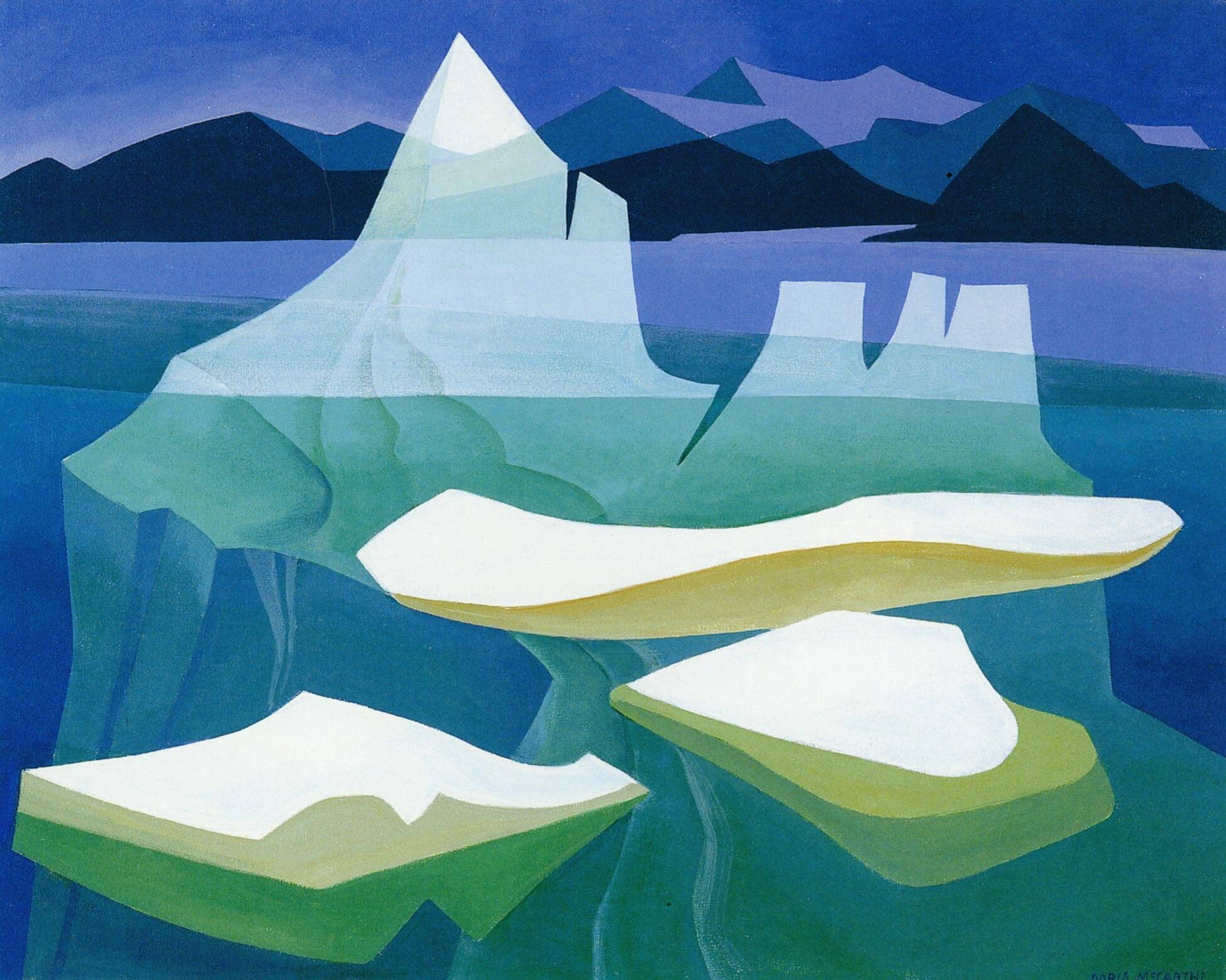
Doris McCarthy, Iceberg Fantasy No. 9, 1973
Acrylic on canvas, 61 x 76.2 cm
Private collection
As the title suggests, this work is not a rendering of a specific place but a naturalistic fantasy based on McCarthy’s experiences in the Canadian Arctic. It shows three floating pieces of ice in the foreground with a large translucent iceberg in the middle ground and mountains behind it. It is painted in blue-green shades, with touches of dark grey, white, and off-white. Free to compose the work on her own terms, McCarthy introduced the zigzag movements from foreground to background that she learned from Hortense Gordon (1886–1961). The contrast between the opaqueness of the ice floes and the transparency of the iceberg enables her to capture the radiating light as well as the colours of the waters around it. The iceberg’s translucent quality also reinforces its temporal quality as opposed to the mountains behind.
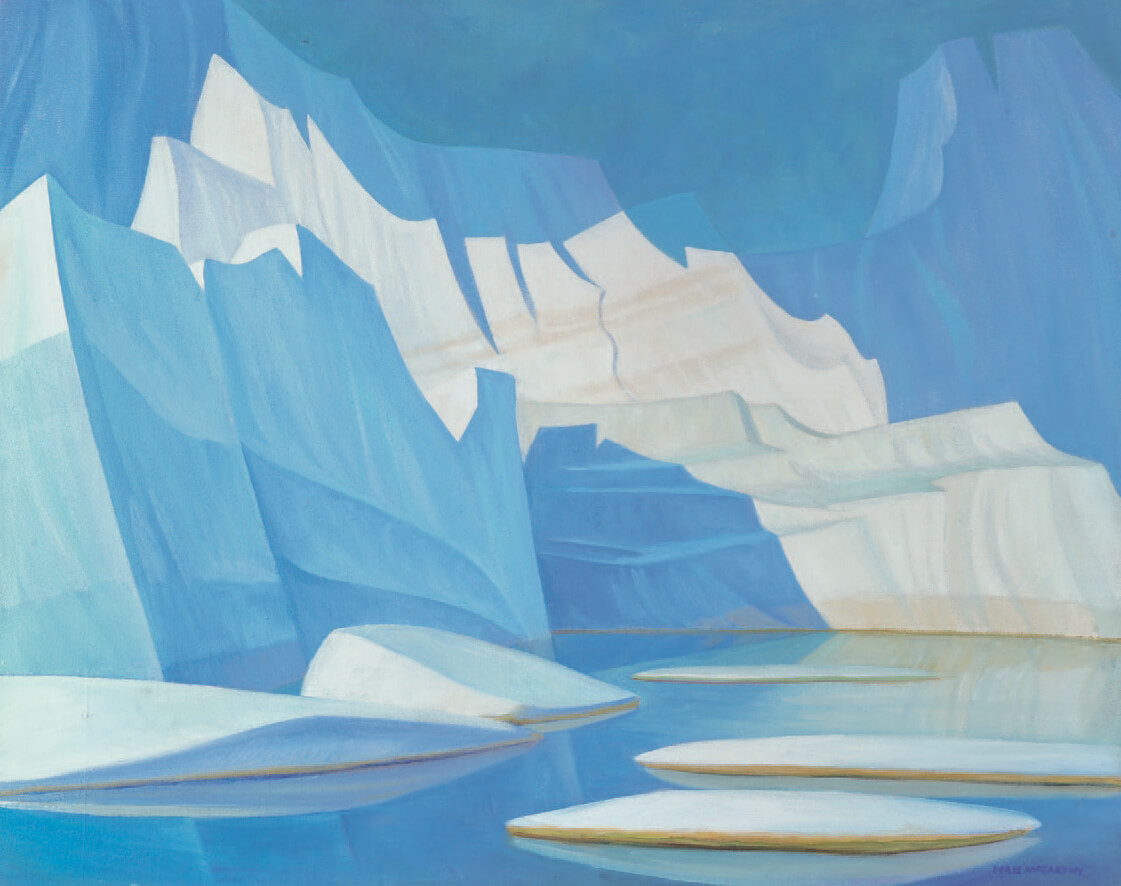
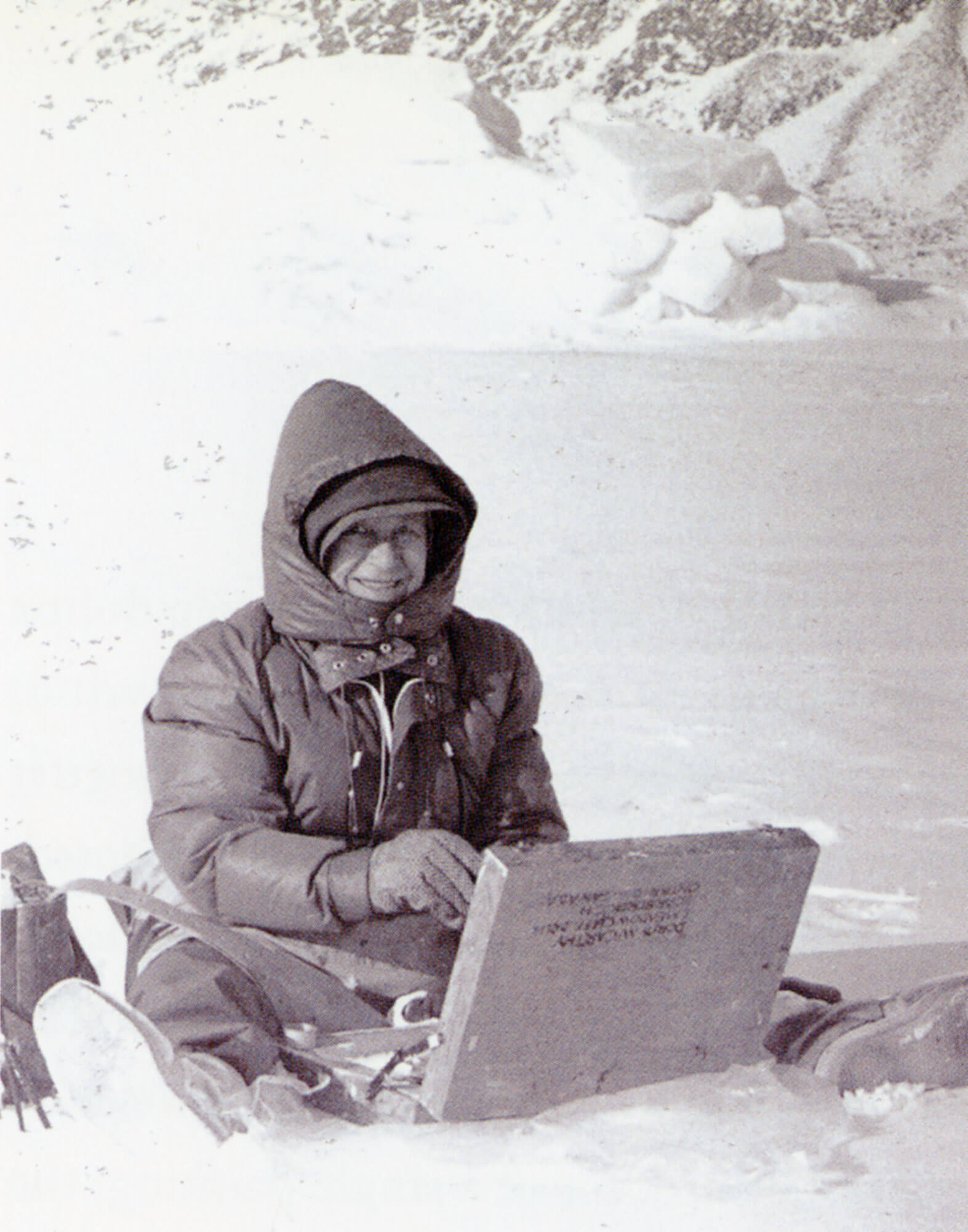
McCarthy first visited the Arctic with her colleague Barbara Greene (1917–2008) soon after she retired from Central Technical School in 1972. That summer, they headed north, landing first at Resolute Bay before continuing on to Eureka, Grise Fiord, and Pond Inlet. In the years that followed, icebergs became a recurring motif in McCarthy’s work and her most identifiable theme.
A government manager of the area, John Scullion, and his wife, Joan (Colly) Scullion, befriended the artists and went on to become major collectors of McCarthy’s work. After John arranged for a dogsled trip for them to see an iceberg, McCarthy was smitten: “I went crazy about icebergs and started doing ice form fantasies.”1 She had actually seen her first iceberg in 1936 as she travelled back from England.2 After the Arctic journey, however, she returned for the next five years and made several trips during the 1980s and 1990s, with her last in 2004.3
Iceberg Fantasy No. 9 is part of a series of sixty works that are clearly indebted to the lessons she learned from her hard-edged landscapes of the 1960s and early 1970s. Although she managed a substantial amount of plein-air painting, the conditions were often demanding. She couldn’t use acrylics or watercolours because they would freeze, and even oils would eventually harden.4 Painting the fantasies was one way of solving the problem.
McCarthy’s Arctic paintings are often compared with those by Lawren S. Harris (1885–1970)—a point that always irked McCarthy.5 Harris’s images are much more sculptural and stylized, whereas McCarthy’s seem more natural and organic, playing with the qualities of the snow and ice. In distinguishing her treatment of the Arctic landscape from those by Harris, she said: “Mine is less abstract, warmer and more loving.”6

 About the Author
About the Author
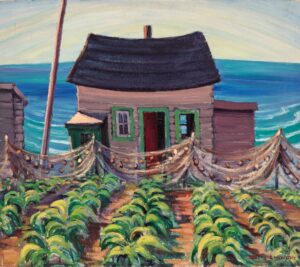 More Online Art Books
More Online Art Books
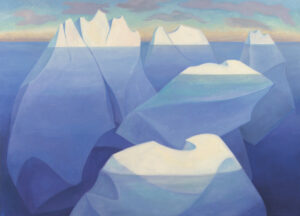 Acknowledgements
Acknowledgements